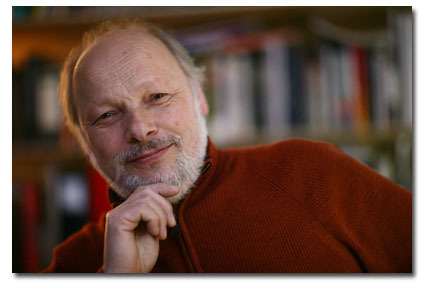
A paper by Michael Wiescher published in the American Physical Society’s Physics journal recently traces development in research on nuclear reactions that happen in stars. The article titled “Cosmic alchemy in the laboratory” covers both theoretical and experimental advances in the field, as well as a discussion of the role of such reactions in creating the variety of physical elements. Wiescher is the Freimann Chair of Physics, Director of the Nuclear Science Laboratory and Director of the Joint Institute for Nuclear Astrophysics.
The paper points forward to three major initiatives for the construction of new underground accelerator facilities, including the Dakota Ion Accelerators for Nuclear Astrophysics (DIANA) at Homestake mine in South Dakota, a collaboration among the University of Notre Dame, the University of North Carolina, Western Michigan University and Lawrence Berkeley National Laboratory. Other proposed underground accelerator facilities are at a salt mine in the United Kingdom and an abandoned train tunnel in Spain. Underground laboratories shield experiments from high-energy cosmic raise that are a distracting background.
The experiments grow out of theoretical advances in recent years in the field of stellar reactions and stellar evolution. Scientists have long known that fusion of hydrogen in stars produces helium, helium burning produces carbon, and subsequent burnings produce neon, oxygen, silicon, iron and nickel. The sequence depends on the mass of stars and leads variously to white dwarfs, red giants and other categories of stars in their life cycles. But because the process involves billions of years, researchers must find creative ways to conduct measurements that lead to more understanding of the evolution process and the associated nucleosynthesis. Complementary to the development of underground accelerator laboratories, equipment such as the newly designed St. George recoil mass separator at Notre Dame will offer alternative ways to study stellar reactions.
“Rapid developments in the study of low-energy nuclear reactions should help researchers overcome a number of the challenges that have hampered past work,” Wiescher wrote. “Theoretical methods have been substantially improved and allow a much more reliable extrapolation of the existing data into the Gamow window of stellar burning (the range of energies of particles that fuse at a given temperature). However, theoretical models are often insufficient in describing the complex interaction and interference of the resonant and nonresonant reaction contributions in the Gamow range. There are also possible effects, which occur near the particle threshold, such as contributions from subthreshold resonances or additional nonresonant contributions that have to be taken into account but are only accessible to direct measurement.”
Michael Wiescher is a Fellow of the American Physical Society and the Humboldt Gesellschaft in Germany. In 2003, he was awarded the Bethe Prize of the Divisions of Nuclear Physics and Astrophysics of the American Physical Society. He has given more than 100 invited presentations at national and international conferences and nearly 100 seminars and colloquia and has published more than 200 refereed articles.
Link to American Physical Society journal article: http://physics.aps.org/articles/v2/69

Contact: Michael Wiescher, Freimann Professor of Nuclear Physics, 574-631-6788,mwiesche@nd.edu